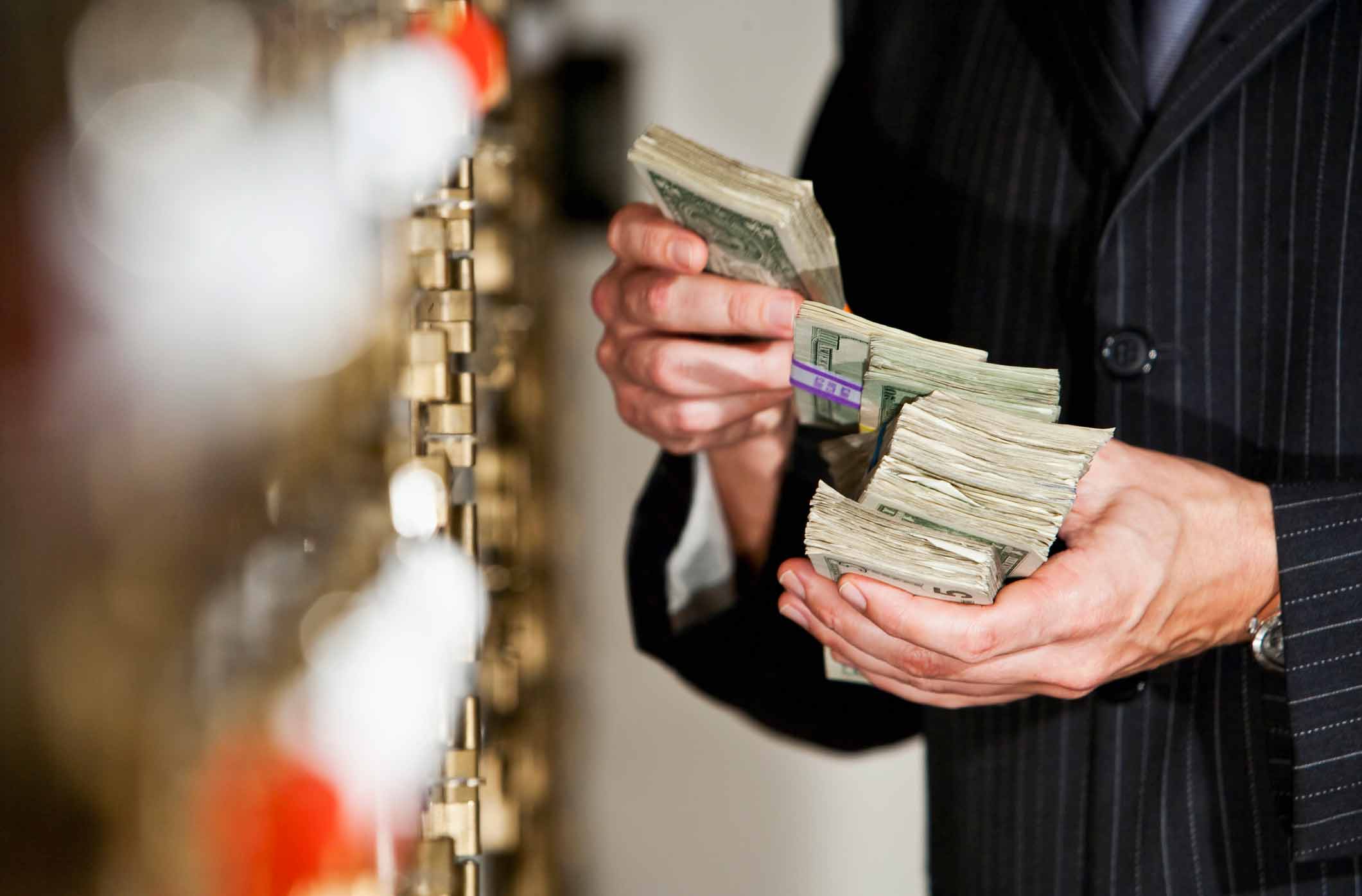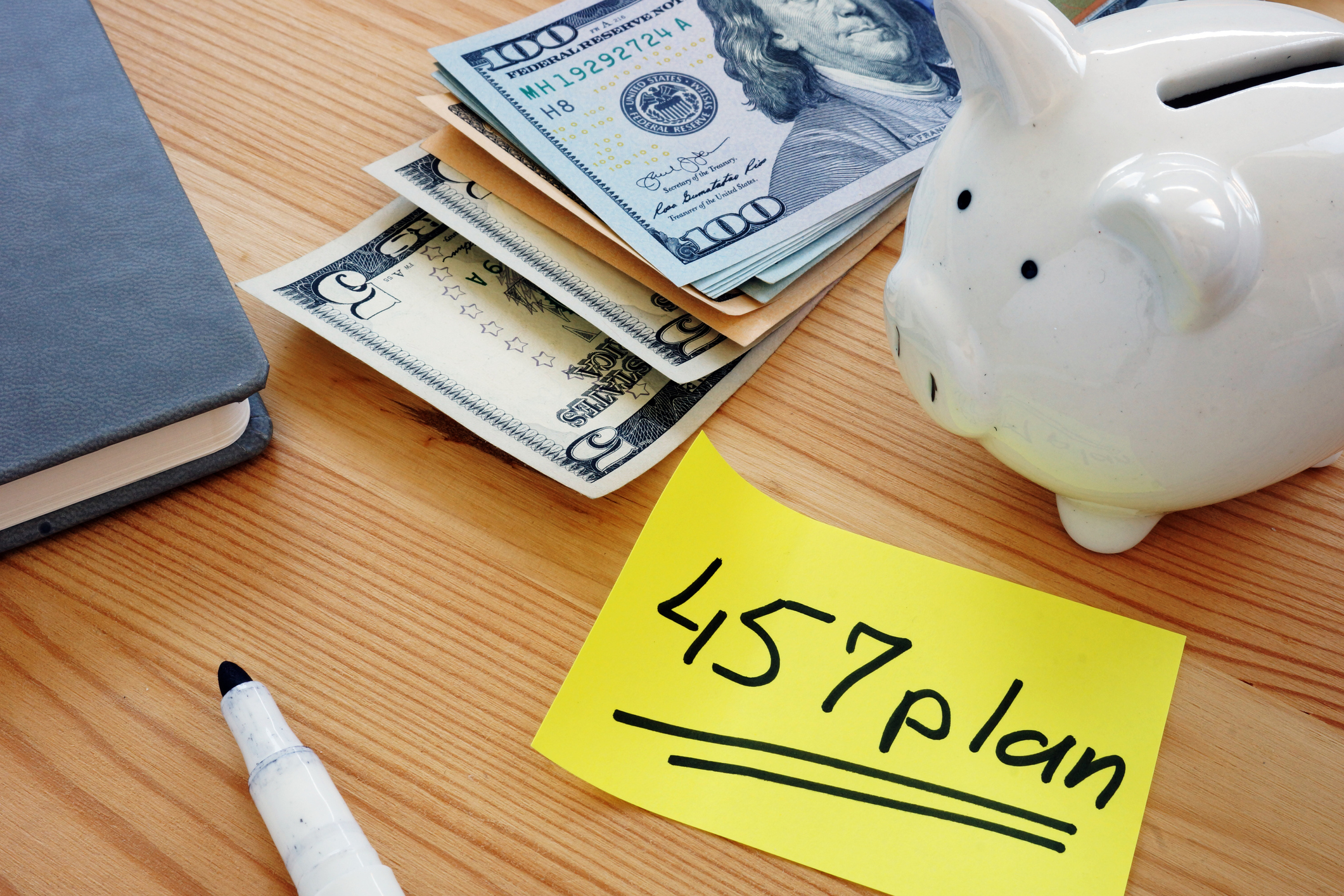Buttress a Nest Egg With a Cash Stash
That cash bucket will come in handy if your riskier accounts, such as stocks or bonds, are in a bear market.


As you enter retirement and start tapping your savings, most financial advisers recommend that you keep anywhere from one to three years’ income in cash—safe, easily liquid investments, such as money-market mutual funds, bank money-market accounts or certificates of deposit. Your longer-term investments, such as bonds for income and stocks for long-term gains, should be held in separate buckets.
You’ll need the cash bucket in case your riskier accounts, such as stocks or bonds, are in a bear market. If the stock market falls 12% in a year and you’re withdrawing 5% a year, your account will be down 17%.
If you take your money from your cash bucket, you’ll give your stock account time to recover—and avoid aggravating market losses with withdrawals.
From just $107.88 $24.99 for Kiplinger Personal Finance
Become a smarter, better informed investor. Subscribe from just $107.88 $24.99, plus get up to 4 Special Issues

Sign up for Kiplinger’s Free Newsletters
Profit and prosper with the best of expert advice on investing, taxes, retirement, personal finance and more - straight to your e-mail.
Profit and prosper with the best of expert advice - straight to your e-mail.
All well and good. But there’s more to creating your cash bucket than that. Your first step is figuring out how much money you’ll need in your cash bucket. You’ll be using the cash bucket for your living expenses during times when the markets are volatile. You’ll need to tally up your typical expenses and subtract any income, such as Social Security, to arrive at the correct amount. If you don’t have an emergency fund for unexpected expenses, such as a new roof, you’ll need to include that money, too.
The next step is determining how long you’ll need your cash stash to last. The average bear market in stocks—defined as a 20% drop or greater—has lasted 14 months, pulling Standard & Poor’s 500-stock index down 33%. If you want to prep for a typical bear market, then you should keep enough in your cash bucket for 14 months. If you need $3,000 a month, your cash bucket should hold at least $42,000 to weather the typical bear market.
The size of your cash bucket also depends on how much cash you need on hand to sleep at night. If stocks and bonds truly worry you, then you need as much as three to five years’ worth of cash. You won’t earn much on it—more on that later—but you won’t wake up worrying whether you will have to sell your stocks and bonds in a bear market, either.
Next, try to get the highest yield possible. At the moment, any safe, highly liquid investment pays barely enough to feed a gnat. The average one-year bank money-market account, for example, yielded 0.73% at the end of October, according to Bankrate.com. The average bank money-market account yielded 0.21%. Neither is enough to overcome inflation, which has averaged 1.82% the 12 months ended October. (To add further woes, interest income is taxed as ordinary income).
Aim for the highest yield you can get, without sacrificing safety or liquidity—which gives you the ability to cash out quickly in a pinch. You can probably get at least 2% on your cash, if you shop around. At press time, for example, BMO Harris Bank offers a 2.05% money-market account, while TIAA Bank offers 1.85%. You won’t be able to live on the interest from these accounts, but you’ll have easy access to your money and beat inflation modestly. If you use bank CDs, don’t lock into a term greater than one year—these days, the additional interest you get from extending maturities is negligible. Bankrate’s top-performing five-year CD recently yielded 2.25%, for instance.
Money-market mutual funds are another solution. They aren’t government guaranteed, but they have a good safety record and offer checking privileges, just like a bank. The average money fund yields 1.49%, while the top-yielding money fund, Vanguard Prime Money Market fund (symbol VMMXX), yields 1.76%.
When It’s Time for a Fill-up
Once you’ve settled on investments for your cash bucket, the next question is how to manage it. The first order of business is to see how well your spending has tracked the amount you estimated it would, says John Campbell, senior vice president of U.S. Bank Wealth Management. “You may need to true it up,” Campbell says. “Your north star is the amount you really need.” If you’re on target, fine. If you need to make adjustments, that’s fine, too. Just make sure you do a reality check at least once a year.
From time to time, you’ll need to add to your cash stash. “You’ll need a plan for refilling the cash bucket,” says Christine Benz, director of personal finance at Morningstar. Most times, you can use simple rebalancing—moving money from buckets that have done well to those that have declined. For example, suppose you start with a $1 million portfolio and have 10%, or $100,000, in your cash bucket. You have 40%, or $400,000, in your bond bucket and 50%, or $500,000, in your stock bucket. In your first year, you withdraw $40,000, or 4% of your total portfolio, for living expenses. Assuming you earn 5% on your bonds and 8% on your stocks, you’ll have $1,025,000 in your portfolio at the end of the year.
To get your cash portfolio back to $100,000, you’d need to withdraw $40,000 from your other two buckets. You could take half that amount from your bond portfolio, which has grown to $420,000, and half from the stock bucket, or you could take the entire $40,000 from your stock portfolio, which has grown by $40,000. (Filling the cash bucket by selling appreciated stocks or using qualified dividends would mean you get the advantage of lower capital-gains tax rates).
But if the stock market gets bitten by the bear, you don’t want to take money from your stock account. “That’s the whole idea with this thing—not having to invade the stock portion of your portfolio in a worst-case scenario, especially in the early years of withdrawals,” Benz says. Let’s say that in year one, you withdraw the same amount—$40,000—from your cash account, while your stock portfolio suffers a 33% loss. If you take $20,000 from your other two buckets to refill your cash bucket, your stock portfolio will shrink by 37%. You’ll need to earn nearly 50% to get back even.
Here you have two choices. You can simply take your next year’s $40,000 from your cash bucket, since you have $60,000 remaining, and hope for better times next year. Or you could take some or all of the $40,000 from your bond portfolio. In the meantime, you could let your stock portfolio recover.
It doesn’t hurt to gear your stock portfolio toward dividend-paying stocks, because dividends help cushion some of your losses and accelerate your portfolio’s recovery. You can also add some high-yield investments to your stock bucket to boost yield. (Benzrecommends putting high-yield bonds into your bucket for stocks because high-yield bonds track stocks more closely than bonds.)
In any event, it makes sense to have at least one year’s worth of living expenses in a safe, liquid cash option. Manage it correctly and you won’t have to worry about selling stocks in a bear market—and making a bad situation worse.
Profit and prosper with the best of Kiplinger's advice on investing, taxes, retirement, personal finance and much more. Delivered daily. Enter your email in the box and click Sign Me Up.

-
 How to Safely Open an Online Savings Account
How to Safely Open an Online Savings AccountOnline banks offer generous APYs that most brick-and-mortar banks can't match. If you want to make the switch to online but have been hesitant, I'll show you how to do it safely.
-
 7 Ways to Age Gracefully Like the Best Stock Photo Seniors
7 Ways to Age Gracefully Like the Best Stock Photo SeniorsAs a retirement editor, I've gleaned valuable wisdom (and a lot of laughs) from one older couple that tops the seniors' stock photo charts.
-
 My First $1 Million: Banking Executive, 48, Southeast U.S.
My First $1 Million: Banking Executive, 48, Southeast U.S.Ever wonder how someone who's made a million dollars or more did it? Kiplinger's My First $1 Million series uncovers the answers.
-
 9 Types of Insurance You Probably Don't Need
9 Types of Insurance You Probably Don't NeedFinancial Planning If you're paying for these types of insurance, you may be wasting your money. Here's what you need to know.
-
 Amazon Resale: Where Amazon Prime Returns Become Your Online Bargains
Amazon Resale: Where Amazon Prime Returns Become Your Online BargainsFeature Amazon Resale products may have some imperfections, but that often leads to wildly discounted prices.
-
 What Does Medicare Not Cover? Eight Things You Should Know
What Does Medicare Not Cover? Eight Things You Should KnowMedicare Part A and Part B leave gaps in your healthcare coverage. But Medicare Advantage has problems, too.
-
 15 Reasons You'll Regret an RV in Retirement
15 Reasons You'll Regret an RV in RetirementMaking Your Money Last Here's why you might regret an RV in retirement. RV-savvy retirees talk about the downsides of spending retirement in a motorhome, travel trailer, fifth wheel, or other recreational vehicle.
-
 457 Plan Contribution Limits for 2026
457 Plan Contribution Limits for 2026Retirement plans There are higher 457 plan contribution limits in 2026. That's good news for state and local government employees.
-
 Estate Planning Checklist: 13 Smart Moves
Estate Planning Checklist: 13 Smart Movesretirement Follow this estate planning checklist for you (and your heirs) to hold on to more of your hard-earned money.
-
 Medicare Basics: 12 Things You Need to Know
Medicare Basics: 12 Things You Need to KnowMedicare There's Medicare Part A, Part B, Part D, Medigap plans, Medicare Advantage plans and so on. We sort out the confusion about signing up for Medicare — and much more.
-
 The Seven Worst Assets to Leave Your Kids or Grandkids
The Seven Worst Assets to Leave Your Kids or Grandkidsinheritance Leaving these assets to your loved ones may be more trouble than it’s worth. Here's how to avoid adding to their grief after you're gone.